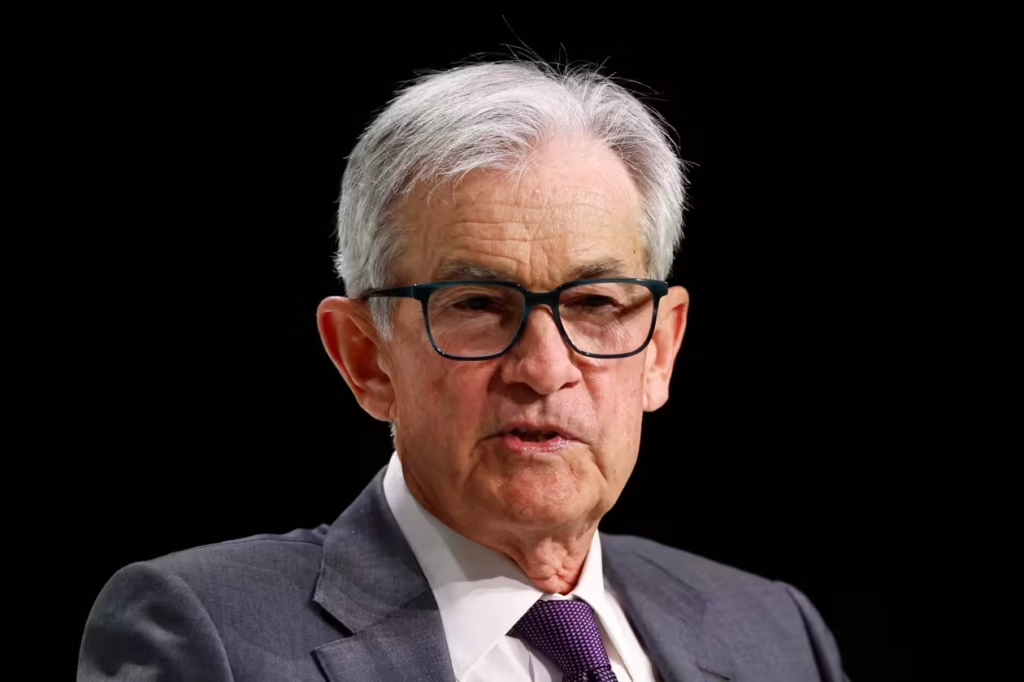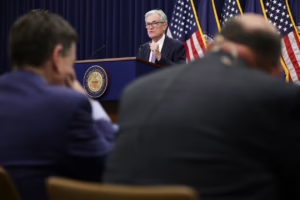The Federal Reserve on Wednesday remained in a holding pattern on interest rates, while warning about more uncertainty in the economic outlook and higher risks of unemployment and inflation in the new high-tariff U.S. economy.
In a statement, Fed officials said uncertainty around the economic outlook “has increased further,” adding that “the risks of higher unemployment and higher inflation have risen.”
There were no dissents from the Fed statement.
The U.S. economy contracted in the first quarter as consumers cut back on spending. Businesses rushed to buy foreign goods before an anticipated rise in costs, causing gross domestic product to contract. The labor market has so far weathered the storm, but trade policy has sparked deep unease among consumers, businesses and investors.
Also read: Opinion: Powell says Trump tariffs could delay inflation progress – and rate cuts – by a year
In the statement, Fed officials highlighted that “swings in net exports have affected the data,” but added that economic activity “has continued to expand at a solid pace.”
Economists have said the biggest question for the central bank is whether the economy is strong enough to adjust to the higher taxes on goods imported into the U.S.
During his press conference, Fed Chair Jerome Powell stressed uncertainty and said interest rates were in a good place given current conditions. “There is just so much we don’t know,” Powell said. He added that the Fed didn’t need to be “in a hurry.”
It was just not clear what the response of interest-rate policy should be, he concluded.
Odds of a recession are as high as they have been since after the Fed started ramping up interest rates in the fall of 2022.
With Wednesday’s decision, the Fed has kept interest rates unchanged for three straight meetings.
The central bank has two rate cuts penciled in for this year. Officials have said they want to be sure tariffs don’t cause a sustained increase in the inflation rate before they cut interest rates.
Powell said the central bank will learn more about where tariffs are going to land with each week and month that goes by. There is now “so much uncertainty about the scale, the scope and the persistence” of the levies, Powell said.
President Donald Trump rocked global markets with his April 2 rollout in the Rose Garden of sweeping tariffs on countries around the world. He then went on to announce a 90-day pause of those “liberation day” tariffs for most countries.
Trump has repeatedly called for the Fed to lower interest rates, sparking speculation that he might try to fire Powell. The president recently said he won’t make an effort to dismiss the Fed chief, even as he hurled insults in his direction.
The Fed’s statement on Wednesday shows “very neat work for an outfit trying to avoid touching the third rail of Trumpian politics,” Chris Low, chief economist at FHN Financial, said in a note. “Note how the Fed managed to dismiss a downward lurch in growth caused by surging imports in anticipation of tariffs without mentioning either imports or tariffs.”
Powell in a speech last month said that Trump’s tariffs were significantly larger than had been expected and that their economic effects – such as higher inflation and slower growth – would thus also be larger.
James Egelhof, chief economist at BNP Paribas, thinks the Fed will remain on hold through the end of the year, with a tradeoff between high inflation from tariffs and a soft patch of growth from the adjustment to the tariffs.
“Absent a decisive turn in the data, the FOMC seems quite comfortable remaining on hold indefinitely,” he said.
“If it were obvious that the next move would be a cut, Powell would have cut already,” he said in an interview.
Tom Simons, chief U.S. economist at Jefferies, said he expects the economy to “grind to stall speed” in the second half of the year and into 2026, but avoid recession.
He said he expects two quarter-point rate cuts in the last three meetings of the year, starting in September. That will get rates closer to the “neutral” level that neither boosts nor dampens demand, he said in an interview.
“Neutral feels like the place they should be if we’re not in recession, but we’re dealing with higher price levels from tariffs,” Simons said.





